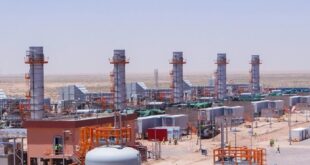Equinor ASA will drill about 25 exploration wells off Norway’s coast next year in a bet that it will be among the last companies still producing oil and gas when the world has achieved net-zero emissions.
All scenarios, including the International Energy Agency’s vision of a net-zero world, include the continued use of oil and gas decades from now, albeit in smaller quantities than today, said Jez Averty, Equinor’s senior vice president for subsurface in the company’s Norwegian exploration and production department.
“The question is: Which oil and gas is it going to be?” Averty said in an interview. “Our plan, basically, is to make sure that the Norwegian continental shelf has the last drops, the last molecules, the last barrels to survive in that competition.”
Equinor says its oil and gas, the production of which generates fewer emissions than in some other parts of the world, will give it a lasting advantage in a carbon-constrained world. Yet the company still faces pressure from all sides.
Before an election earlier this year, there was a lively debate about whether Norway should be one of the first major oil and gas producing nations to choose to limit the extraction of fossil fuels. That was settled, for the moment, with the formation of a new minority government that is a big supporter of the industry and wants it “developed, not dismantled,” according to Prime Minister Jonas Gahr Store.
Still, its home nation, which is western Europe’s biggest oil and gas producing nation, has decided to temporarily stop awarding fresh exploration licenses in frontier areas next year.
Hydro-Powered Oil
To deliver future oil and gas resources that are as “clean” as possible, Norway aims to supply most of its offshore oil and gas installations with hydroelectricity generated onshore. This will allow the gas turbines that power offshore installations — the biggest emitters of carbon dioxide within Norway’s borders — to be shut down.
Equinor’s Johan Sverdrup oil field is already fully electrified. It started production two years ago and is expected to operate for more than 50 years. The process of extracting the crude emits 0.67 kilograms (1.5 pounds) of carbon dioxide per barrel, compared with the company average of 9 kilograms. The global average is 18 to 19 kilograms.
Yet Norway isn’t the only country with this idea. Saudi Arabia, leader of the Organization of Petroleum Exporting Countries, also says it wants to pump the world’s last barrel. The carbon intensity of the kingdom’s crude matches that of Equinor, at 9 kilograms a barrel, according to Oslo-based consultant Rystad Energy A/S.
There’s also the question of whether it will remain politically possible for Norway to remain as a major exporter of carbon-based fuels even as it implements its own emissions reductions, and strives for leadership in areas such as electric cars. Its neighbor the U.K. is already facing stiff opposition to new oil and gas developments on climate grounds, contributing to the shelving of the Cambo field earlier this month.
Even though lawmakers decided there won’t be a new licensing round for virgin areas in 2022, Equinor sees huge possibilities in the established parts of Norway’s waters. As much as 80% of its planned wells for the coming year will be near existing facilities. “The primary goal is to maximize value from the infrastructure,” Averty said.
Equinor will also be trying out new ideas, such as “using our geological modeling to see whether we can actually make discoveries in parts of the rock formations that haven’t been proven before,” Averty said.

 Iran Energy News Oil, Gas, Petrochemical and Energy Field Specialized Channel
Iran Energy News Oil, Gas, Petrochemical and Energy Field Specialized Channel



